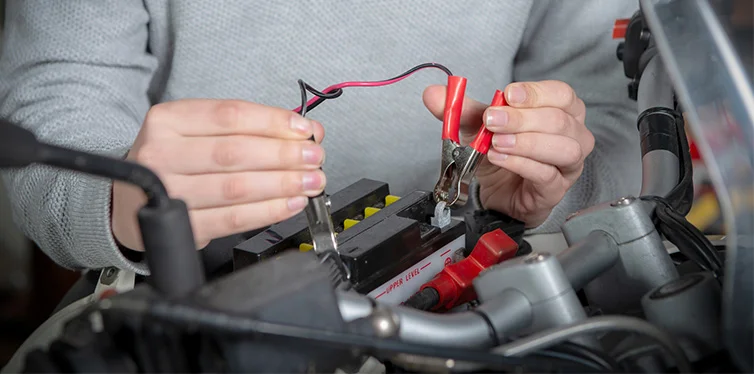How To Guides
HOW TO EXTEND THE LIFE OF A MOTORCYCLE BATTERY
It’s no secret that motorbikes are pretty rough on batteries and because it’s only something you learn with time, new riders tend to go through them at a faster rate. But there are ways you can extend the life of the battery with proper care and attention.

Use the correct battery
It may seem like an obvious one to start with, but not all riders use the correct battery. Only use batteries that are in-line with the bike manufacturer’s specifications. Some say that replacements should be exactly the same type as the original. An example of this would be a maintenance-free AGM battery, which should not be replaced with a maintenance-free Gel battery. Also, look for batteries that have an extended lifespan. They are more expensive but tend to be worth it in the long run. With batteries, it is generally true that you get what you pay for!
Charge the battery
Another good way to extend the battery’s lifespan is to keep it fully charged as much as possible. For example, a 12-volt battery would likely be anywhere between 12.6 to 12.8 volts, rather than 12.0 to 12.2. Batteries like to be used, so the best thing is to ride as often as possible.
If a bike is used most days it will keep the battery fully charged automatically. However, if there are long gaps in-between rides, particularly over winter, use an ‘intelligent’ trickle charger to keep it topped up. Be sure to use one that is dedicated to motorcycle batteries only, however, and not for use with cars or other vehicles, as it could damage the battery permanently.
Use a maintenance schedule
Good maintenance also plays a role in helping keep your battery alive for longer, and even though most motorcycle batteries are now maintenance-free you still need to keep an eye on them and their leads and terminals. The battery should come with a maintenance schedule from the manufacturer, and while it can be easily overlooked, the checklist can make a notable difference.
When you disconnect any bike battery, remove it via the negative terminal first, before putting it onto a clean surface in a well-ventilated area. Keep an eye out for signs of corrosion and clean where appropriate as described earlier. If it’s a conventional flooded (wet cell) battery also check the electrolyte levels regularly, and add deionised or distilled water when necessary to keep the levels up to the MAX line. And if you own a hydrometer or voltmeter (for bikes) you can test the battery using these devices.

